Monster Hunter: World weapons guide
Learn about weapon types, sharpness, affinity, elements and statuses.
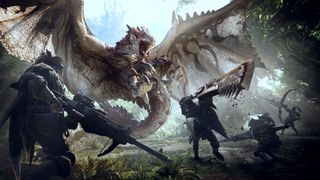
There are a whopping 14 weapons in Monster Hunter: World, so choosing one isn't easy. The good news is that you don't have to pick just one. You can swap weapons or change your entire setup whenever you want, including during a hunt, so there's no reason to limit yourself to one weapon. Experimenting with weapons and finding good matchups with different monsters is one of the most enjoyable parts of hunting. So, in this guide we'll go over each weapon's signature moves and its general play style, as well as what armor skills they benefit from. But first, let's look at the basics of weapons in Monster Hunter: World.
Just getting started? Check out our beginner's guide, then put your weapon skills to the test with help from our Monster Hunter: World monsters guide.
Sharpness
All melee weapons have a sharpness meter. There are six tiers of sharpness. In ascending order of strength, they are: red, orange, yellow, green, blue and white. The sharper your weapon is, the more damage you'll deal. Additionally, some monsters parts can only be cut by weapons of a certain sharpness. If your blade is too dull, your attack will bounce off and you'll deal very little damage.
Each time you land an attack, you lose a point of sharpness. If you lose too many points, you'll lose a sharpness tier. So if your weapon has a little bit of blue sharpness, let's say 20 points worth, you'll go down to green sharpness after you land 20 attacks. As you can imagine, weapons that deal rapid hits like the dual blades and insect glaive lose sharpness quickly, while slower weapons like the hammer and great sword don't lose much at all. You can recover sharpness by sharpening your weapon with your whetstone, but this takes a few seconds so be sure to find a safe window.

You do not necessarily need to sharpen every time you lose a tier of sharpness. Let's say you have a sliver of blue sharpness and a good chunk of green sharpness. Don't obsess over that little bit of blue. Ride the green out, and once you hit yellow sharpness, that's when you should break out the whetstone. This will minimize downtime and keep your damage up.
You can improve your sharpness through several armor skills:
- Handicraft: extends sharpness meter
- Protective Polish: you won't lose sharpness points for a while after polishing
- Master's Touch: you won't lose sharpness points when you land crits
- Razor Sharp: halves sharpness loss
- Speed Sharpening: speeds up whetstone sharpening
Affinity
Affinity is Monster Hunter: World's version of critical hit chance. If your weapon has 10 percent affinity, you have a 10 percent chance of dealing a critical hit. Critical hits deal 25 percent more damage than normal hits, so affinity can be extremely powerful. However, it can also hurt you: if you use a weapon with -20 percent affinity, for instance, you'll have a 20 percent chance of dealing a weaker attack that deals 25 percent less damage than normal.
The biggest gaming news, reviews and hardware deals
Keep up to date with the most important stories and the best deals, as picked by the PC Gamer team.
Luckily, most weapons have a base affinity of 0 or higher, and even weapons with negative affinity can become powerhouses if you use the right armor skills, like these:
- Attack Boost: increases attack and, at higher levels, affinity
- Critical Eye: increases affinity
- Weakness Exploit: increases affinity when hitting a monster's weak points
- Agitator: increases attack and affinity when the monster you're hunting enrages
- Maximum Might: increases affinity while your stamina is full
- Critical Boost: increases damage dealt by critical hits
These six skills, coupled with some of the sharpness skills we went over before like Handicraft and Protective Polish, are great skills to use if you want raw DPS. All 14 weapons will benefit greatly from them (though sharpness skills obviously won't affected ranged weapons). But there are also several skills uniquely suited to some weapons, as we'll see in a bit.
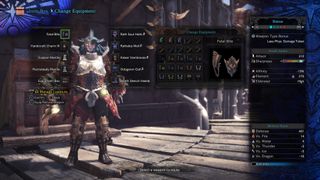
Elemental damage
Physical and elemental damage are calculated differently in Monster Hunter: World. Physical damage is based on a weapon's attack power and the value of the attack itself, which is why the final hit in your combo does more damage than the first hit. But elemental damage is calculated independently. You deal the same amount of elemental damage no matter what attack you use. Elemental damage also isn't affected by affinity. It's entirely based on your weapon's elemental attack. So, rapid, weak hits which deal relatively little physical damage can rack up tons of elemental damage. As a result, fast-hitting weapons like the dual blades and sword and shield are great at dishing out elemental damage.
You can boost your elemental damage with several armor skills. Just know that there's a limit to how high a weapon's elemental attack can go, and investing in element-boosting skills after you reach that limit is pointless. The good elemental skills are pretty obvious:
- Fire Attack: increases fire attack
- Water Attack: increases water attack
- Ice Attack: increases ice attack
- Thunder Attack: increases thunder attack
- Dragon Attack: increases dragon attack
- Elemental Crit: allows the 25 percent critical hit modifier to affect elemental damage
- Free Element: unlocks hidden (grayed out) elemental damage on weapons
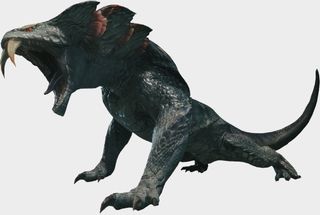
Status effects
Abnormal statuses like poison and paralysis are also calculated uniquely. Melee weapons with abnormal status elements don't actually deal extra damage. Instead, they apply statuses over time. Status ammo for ranged weapons will always deal status damage, but melee weapons have a 30 percent chance of dealing status damage every hit. Once you deal enough status damage to a monster—based on that monster's unique status threshold—the status will kick in. So, if you're dealing paralysis damage, the monster will become paralyzed. Once that status wears off, the monster's threshold will reset and increase, meaning if you had to deal 100 points of status damage to trigger the first effect, you'll have to deal around 150 points of damage to trigger it a second time, and so on.
There are several abnormal statuses in Monster Hunter: World, but we're going to focus on the four most common ones:
- Sleep: puts the monster to sleep
- Paralysis: freezes the monster in place for a few seconds
- Poison: deals damage to the monster over time
- Blast: causes a small explosion which instantly deals a set amount of damage
Like elemental damage, status damage can be boosted through armor skills. However, there's also a cap on how far you can push a weapon's status damage. Again, good status skills are obvious:
- Sleep Attack: increases sleep attack
- Paralysis Attack: increases paralysis attack
- Poison Attack: increases poison attack
- Blast Attack: increases blast attack
Weapon types
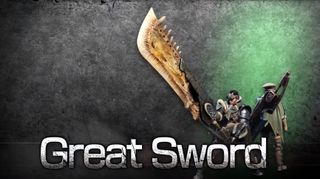
Great Sword
The great sword is a huge, slow weapon which can be charged up for massive damage. The longer you charge an attack (within reason), the more damage it will deal. You can chain attacks together to reach the devastating 'true charge slash.' The great sword also has a unique 'tackle' which lets you punch through a monster's attack. You'll still take damage from attacks you tackle through, but you won't be knocked back, so you can keep your combos going. The great sword is all about timing and positioning, and requires knowledge of monster attack patterns to be used effectively. If you find yourself in a pinch, you can always block, though you will lose a lot of sharpness.
Useful skills: Focus (charge attacks faster), Punishing Draw (deal KO damage on draw attacks), Critical Draw (increases affinity on draw attacks) Quick Sheath (sheath weapon faster)
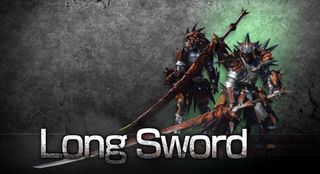
Long Sword
The long sword has the greatest reach of any melee weapon and is capable of swift, elegant strikes. Landing normal attacks builds spirit energy which you can spend on powerful spirit attacks. By landing a full spirit combo, you can improve your spirit gauge and increase your attack. The long sword also has a parry called the 'foresight slash' which can negate all damage from a monster's attack if you time it correctly, to say nothing of the flashy aerial attack called the 'helm splitter.'

Sword and Shield
A fast, well-balanced weapon which is great for beginners and experts alike. Use the sword in quick slashing combos, and use the shield to bludgeon monsters or block attacks. The sword and shield is the only weapon that allows you to use items like health potions while you have your weapon out. You can also use your slinger with the sword and shield equipped.
Useful skills: Wide-Range (items you use also benefit teammates in multiplayer hunts)
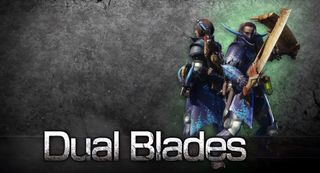
Dual Blades
The fastest and arguably most mobile weapon in Monster Hunter: World. The dual blades specialize in rapid hits augmented by 'demon mode,' a toggleable state which buffs your attacks and makes you move faster at the expense of some stamina. Dual blades are a great choice for fans of action games having a hard time adjusting to Monster Hunter's deliberately paced combat.
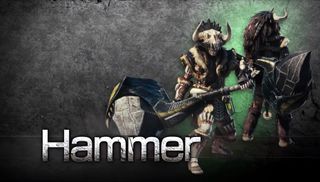
Hammer
The hammer is another slow, heavy weapon with charge attacks, but it's much more mobile than the great sword. Which is good, because you need to keep a bead on the monster's head. When you hit the head, you'll not only deal more damage, you'll deal KO damage which will eventually stun the monster, leaving them vulnerable to your powerful 'big bang' combo. Like great sword, hammer is hugely reliant on knowledge of monster attack patterns.
Useful skills: Slugger (deal more KO damage)
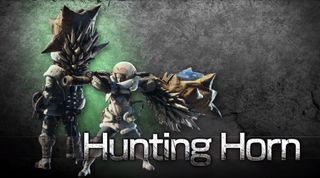
Hunting Horn
Simply put: a destructive instrument. Every attack plays a note, and by playing notes in the correct order, you can play songs which buff you and your teammates. Playing songs is also a strong attack in it own right. The hunting horn is especially powerful in multiplayer, but it can hold its own in solo hunts. It can also stun monsters if you hit the head, though it can't KO as reliably as the hammer.
Useful skills: Horn Maestro (improves songs)
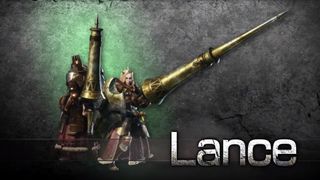
Lance
The lance is really a two-part weapon. In one hand you've got a long lance capable of dealing precise damage from relatively far away, and in the other hand you've got a sturdy greatshield which can block almost all monster attacks. The lance's attacks are plain thrusts, but you can also charge forward as if you were jousting. Your greatshield is good for more than blocking, too: you can also parry monster attacks and counterattack.
The lance is a heavy weapon with a unique control scheme: you can't dodge roll with it equipped. Instead, you can dash forward or to the side in a way reminiscent of old-school tank controls. However, the lance is still a very mobile weapon. You can charge and chain dashes to cover ground, and you can even block while dashing.
Useful skills: Guard (block attacks more effectively)
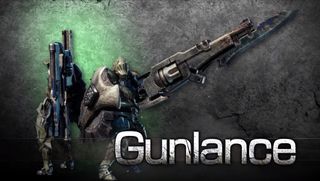
Gunlance
The gunlance is exactly what it sounds like: a lance with a gun on it. In exchange for the mobility and flexibility of the lance, it gains explosive shells which can be charged up and fired like a shotgun. You can use shells sparingly to extend thrusting combos or dump them all at once for explosive burst damage. The gunlance can also impale monsters with explosive 'wyrmstakes' and loose slow-charging 'wyvern's fire' rounds which deal big damage.
The gunlance has the same tank control-dash of the lance, but it can't chain dashes together. It also can't do a running charge. And while its shield is just as strong as the lance's, the gunlance cannot parry attacks.
Useful skills: Guard (block attacks more effectively), Artillery (strengthens shells and wyvern's fire), Capacity Boost (increases shell capacity)

Switch Axe
The switch axe is part sword, part axe. Attack with the axe to build switch energy, then switch to the heavy sword and lay into monsters. Attacking with the sword builds toward an amped state which lets unleash the powerful 'elemental discharge.'. You can swap between the axe and the sword at any time provided you have the energy, which makes for some flashy combos. The switch axe is an incredibly aggressive weapon, making it another good fit for action game fans looking for something with a little more bite.
Useful skills: Evade Extender (lets you roll farther)
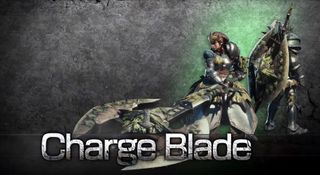
Charge Blade
In its default state, the charge blade feels like a heavier sword and shield. As you deal damage with the sword, you build energy which you can transfer into phials. Those phials fuel the charge blade's considerably stronger axe form. Your shield becomes an axe blade, and your phials become explosive payloads. Phials can also be used to charge up the shield or the sword. Like the switch axe, you can swap forms at any time, which makes for dynamic fights. The charge blade is as powerful as it is complicated, but learning it is well worth the effort.
Useful skills: Artillery (increases phial damage), Capacity Boost (increases phial capacity)
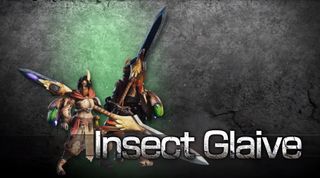
Insect Glaive
A fast-hitting staff with good reach, powerful aerial attacks and a unique companion: the 'kinsect.' You can command your kinsect to attack monsters and spawn clouds of elemental dust which you can detonate with melee attacks. More importantly, you can have it extract nectars which give huge buffs. Red nectar increases your damage and improves your move set, white nectar buffs your movement, and orange nectar provides defensive bonuses.
You should always have red nectar active, but try and get all three whenever possible. Red nectar generally comes from a monster's head, white nectar usually comes from the legs, orange nectar often comes from the body or tail.
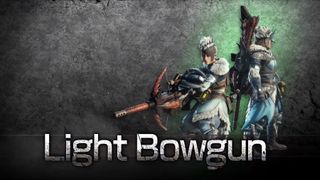
Light Bowgun
A short-to-medium-range weapon capable of rapid-firing elemental rounds. Light bowguns have access to a wide variety of status ammo which can create big openings by paralyzing monsters or putting them to sleep. They can also lay down 'wyvernblast' mines which detonate when shot or stepped on, dealing major damage in a small area.
Both light and heavy bowguns can be customized with weapon mods to improve reload speed, accuracy, or recoil.
Useful skills: [Element] Attack (increase base elemental damage)
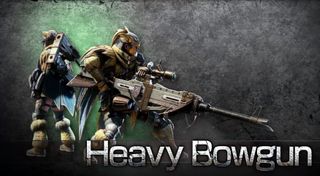
Heavy Bowgun
A medium-to-long-range weapon that can use special ammo. You can run monsters through with piercing rounds, plaster them in sticky bombs, or just cut to the chase and besiege them with literal cluster bombs. Heavy bowguns also have two unique ammo types which have cooldowns: 'wyvernsnipe,' which is basically an anti-tank round, and 'wyvernheart,' which turns your bowgun into a chain gun.
Both light and heavy bowguns can be customized with weapon mods to improve reload speed, accuracy, or recoil.
Useful skills: Piercing Shots (strengthens piercing rounds), Spread/Power Shots (strengthens spread rounds), Free Elem/Ammo Up (increases magazine capacity)

Bow
A medium-range weapon with minimal ammo management. Instead of rounds, the bow uses coatings which give arrows special properties. Power coatings increase damage, close-range coatings turn your bow into a shotgun, and status coatings apply their respective statuses. The bow features straight and wide shots which can be chained together, as well as the 'dragon piercer' which can skewer monsters just like piercing rounds.
Useful skills: Piercing Shots (strengthens dragonpiercer), Special Ammo Boost (strengthens dragonpiercer), Constitution (reduce stamina cost of charging shots), Bow Charge Plus (increases arrow charge limit), Normal Shots (strengthens normal shots), Spread/Power Shots (strengthens power shots)

Austin freelanced for PC Gamer, Eurogamer, IGN, Sports Illustrated, and more while finishing his journalism degree, and has been a full-time writer at PC Gamer's sister publication GamesRadar+ since 2019. They've yet to realize that his position as a staff writer is just a cover-up for his career-spanning Destiny column, and he's kept the ruse going with a focus on news, the occasional feature, and as much Genshin Impact as he can get away with.
Most Popular


